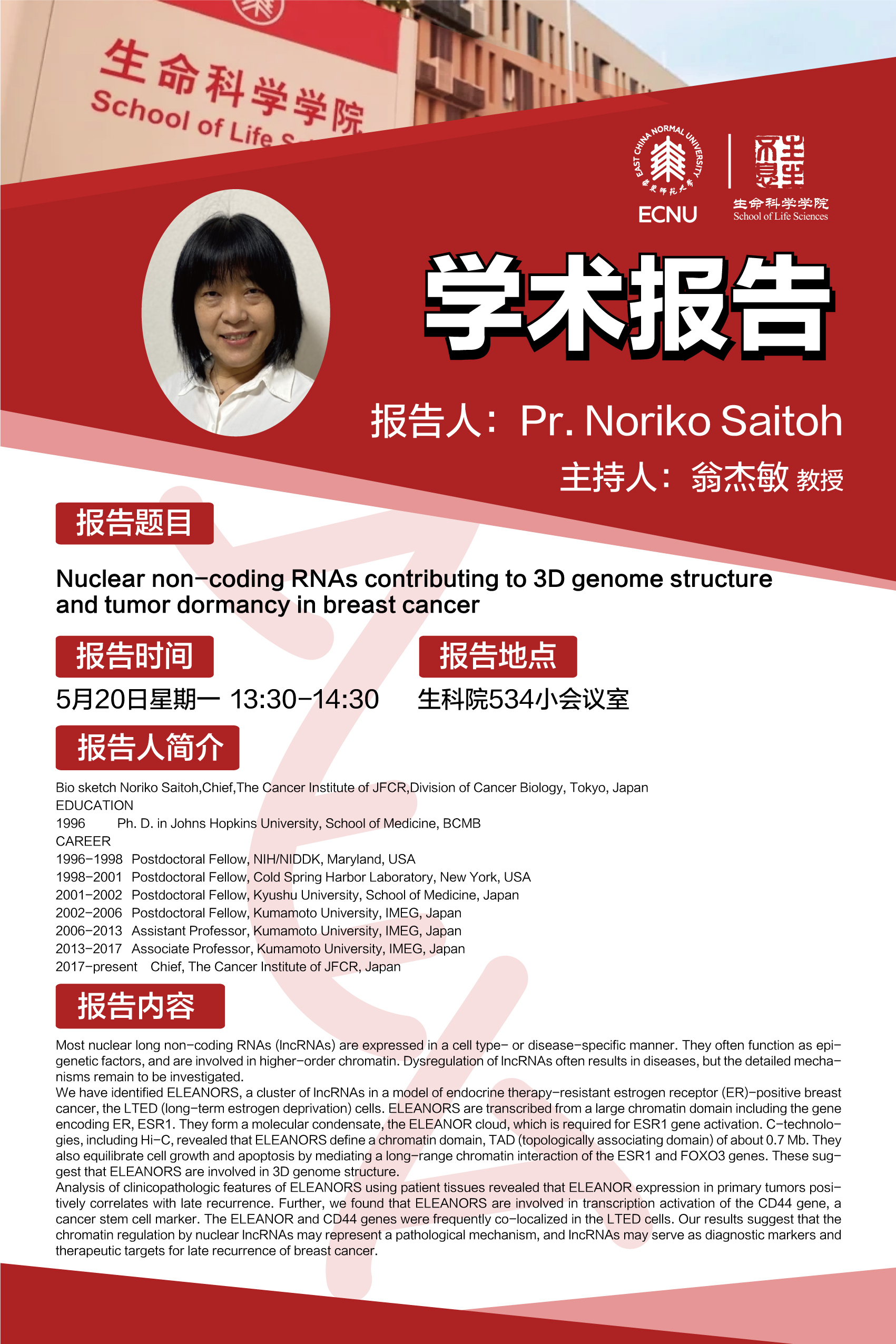报告题目:Nuclear non-coding RNAs contributing to 3D genome structure and tumor dormancy in breast cancer
报告嘉宾:Pr. Noriko Saitoh
主 持 人:翁杰敏教授
报告时间:2024年5月20日 下午13:30-14:30
报告地点:生科楼534小会议室
报告人简介:
Noriko Saitoh,
Chief
The Cancer Institute of JFCR
Division of Cancer Biology, Tokyo, Japan
EDUCATION
1996 Ph. D. in Johns Hopkins University, School of Medicine, BCMB
CAREER
1996-1998 Postdoctoral Fellow, NIH/NIDDK, Maryland, USA
1998-2001 Postdoctoral Fellow, Cold Spring Harbor Laboratory, New York, USA
2001-2002 Postdoctoral Fellow, Kyushu University, School of Medicine, Japan
2002-2006 Postdoctoral Fellow, Kumamoto University, IMEG, Japan
2006-2013 Assistant Professor, Kumamoto University, IMEG, Japan
2013-2017 Associate Professor, Kumamoto University, IMEG, Japan
2017-present Chief, The Cancer Institute of JFCR, Japan
报告简介:
Most nuclear long non-coding RNAs (lncRNAs) are expressed in a cell type- or disease-specific manner. They often function as epigenetic factors, and are involved in higher-order chromatin. Dysregulation of lncRNAs often results in diseases, but the detailed mechanisms remain to be investigated.
We have identified ELEANORS, a cluster of lncRNAs in a model of endocrine therapy-resistant estrogen receptor (ER)-positive breast cancer, the LTED (long-term estrogen deprivation) cells. ELEANORS are transcribed from a large chromatin domain including the gene encoding ER, ESR1. They form a molecular condensate, the ELEANOR cloud, which is required for ESR1 gene activation. C-technologies, including Hi-C, revealed that ELEANORS define a chromatin domain, TAD (topologically associating domain) of about 0.7 Mb. They also equilibrate cell growth and apoptosis by mediating a long-range chromatin interaction of the ESR1 and FOXO3 genes. These suggest that ELEANORS are involved in 3D genome structure.
Analysis of clinicopathologic features of ELEANORS using patient tissues revealed that ELEANOR expression in primary tumors positively correlates with late recurrence. Further, we found that ELEANORS are involved in transcription activation of the CD44 gene, a cancer stem cell marker. The ELEANOR and CD44 genes were frequently co-localized in the LTED cells. Our results suggest that the chromatin regulation by nuclear lncRNAs may represent a pathological mechanism, and lncRNAs may serve as diagnostic markers and therapeutic targets for late recurrence of breast cancer.
